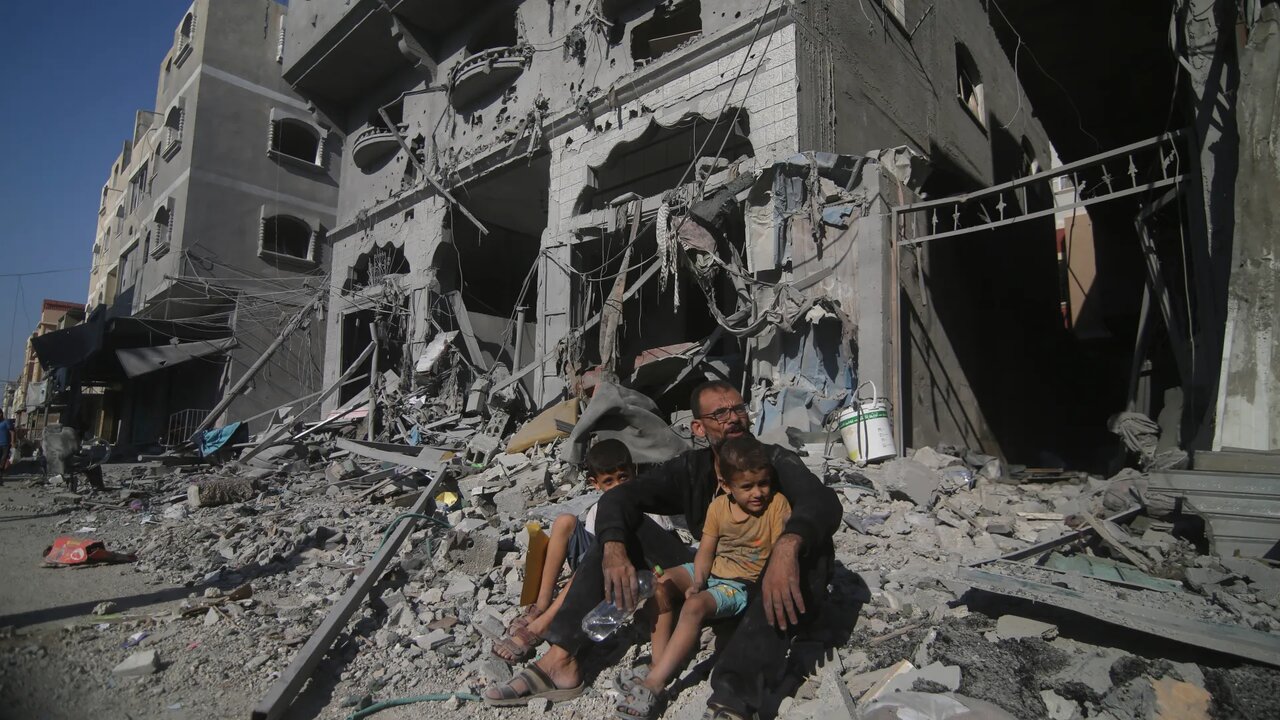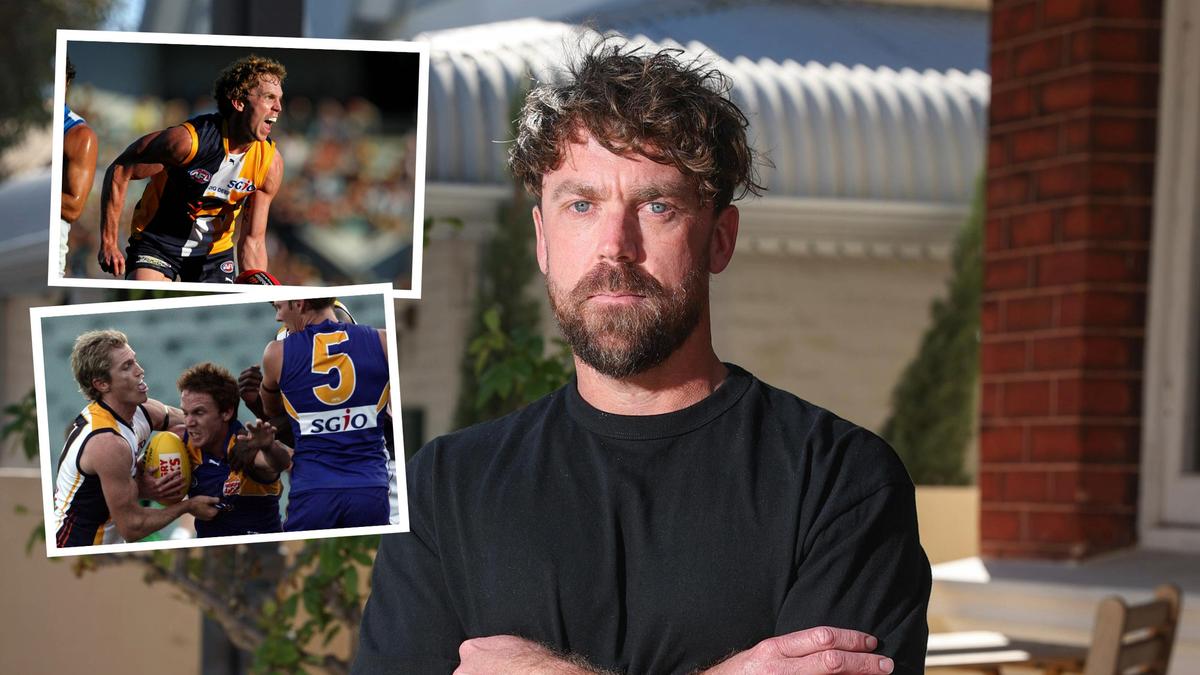By Greg Harman
Copyright truthout

Standing before the United Nations last week, U.S. President Donald Trump unleashed long-held animosity for the body dating back decades to when his company was apparently rejected for a renovations gig. Trump swore he would have delivered mahogany walls and marble floors to the tower. And now look at the state of the place, he grumbled. “You walk on terrazzo. Do you notice that?”
Something far worse than composite flooring is in store for nations that fail to rally to Trump’s hypernationalism, anti-immigrant fervor, and fawning embrace of fossil fuels. “Your countries are going to hell,” he said, apparently addressing his comments primarily to the “English-speaking world.” In a room filled with heads of state already reckoning with global warming as an existential threat, Trump called climate change “the greatest con job ever perpetrated on the world.”
He dismissed the decades of warnings about an overheating planet and the increasingly frequent and extreme weather events that the World Economic Forum has estimated are costing the world $16 million every hour.
It was a do-as-I-say-and-as-I-do lecture, with Trump modeling a domestic climate response that can best be described as ecocidal. He is burning up the evidence of climate crisis while directly attacking renewable energy and other planet-cooling strategies that could keep more people safer the world over. This includes intentionally crashing climate-observing satellites, shutting down a Hawaii observatory that tracks atmospheric changes and a national climate monitoring network, closing federal environmental justice programs serving many of those most impacted by dirty fuels and climate disruption, curtailing federal assistance for disaster-struck communities, and more.
In the wake of the government shutdown, Trump just this week froze an estimated $26 billion in federal dollars for transportation and renewable-energy projects that had been headed to Democrat-led states, seeking revenge on Democrats who demanded that Republicans restore public healthcare services stripped in the federal budget bill.
Of course, dismantling federal research efforts and denying assistance does nothing to slow climate harms. Instead it both accelerates warming and puts more people at risk of harm. Teams rooting out so-called DEI initiatives during the opening months of Trump’s term have targeted climate efforts tied to the National Oceanic and Atmospheric Administration and clawed back $16 billion granted under the Biden Administration to help local communities fight climate change.
If anything, these attacks only prove the wisdom of initiatives undertaken in partnership with city and county governments and nonprofits, which aim to foster community resilience not only in response to climate destabilization, but also from potentially unraveling governmental support.
In San Antonio, Texas, for example, austerity measures in a tightening economy have already defunded two widely hailed efforts that are putting power — both literally and figuratively — into the hands of the community. But the project design and creative accounting born from legacies of distrust in government will likely see both efforts continue, even in the shadow of federal antagonism and potential local government retreat.
The “Beacon” of Beacon Hill
A few miles north of downtown San Antonio sits the Beacon Hill neighborhood, one of the earliest “suburban” neighborhoods for relatively affluent residents of a colonial city. Today it’s populated by older and often ornate single- and two-story homes in various states of repair, an area that has captured the attention of those looking for affordable housing as well as those looking to flip rundown homes at a profit. Its strength is in new and established residents, a vibrant homeowners association, and deepening social networks. In many cases, these are residents aware of the needs of their neighbors and already trained in disaster response.
Elizabeth Eichhorn, for instance, knows two businesses within walking distances whose owners have agreed to open as unofficial warming or cooling centers in the event of extreme temperature shifts. She knows who on the block has gas stoves ready and available to cook or purify water if the electricity is knocked out. She also knows which local business always has a minimum of 80 gallons of drinking water set aside for her block in case the water system fails. It’s information her immediate neighbors share also.
Such understandings arose from necessity starting in the hours after power failure during a 2021 winter storm. In February 2021, hundreds of thousands of residents across the city lost electricity, many for several days. Many others also lost water when the gas-powered generators at those water towers also failed.
Sarah Woolsey, founder of the nonprofit Impact Guild, which at the time operated a brick-and-mortar community center in the area, was soon helping residents stage a door-to-door response to the disaster.
“What happened over those next few days changed me,” she said. “Mostly it was neighbors that needed boiled water but also brought a dozen eggs over. It was this really cool few days of mutual aid with people showing up with what they had, and others needing things, and everybody needing things and receiving.”
That outreach taught her something else about her community. She learned that food insecurity was a daily reality for many before the freeze, with many already “hanging on by a thread,” she told Deceleration.
Beacon Hill has since become a showcase community for the City of San Antonio’s Climate Ready Neighborhoods effort, led by the City’s Office of Sustainability. Impact Guild is a key partner in a program that has intentionally put power into the hands of community by helping them first and foremost deepen their social relationships, identify their resources and talents, and negotiate in advance how they will support one another when disaster hits.
The neighborhood’s experiences in 2021 now inform some of the key literature being distributed by Climate Ready Neighborhoods as it seeks to activate “pods” across the city, neighborhood by neighborhood, teaching the power of interdependence at the level of the city block.
“It’s a matter of realizing that the city can’t be everything, so we have to figure out how to take our own responsibility,” Eichhorn told Deceleration. “Taking care of our neighborhood is shared.”
These neighbors weren’t passively waiting for someone in government to help them prepare for the extreme weather of climate change. They started that for themselves, years before the birth of the Climate Ready effort.
It was a natural shift for Eichhorn, who had lived in areas with frequent disruptions before. “I happened to live in Pasadena, California, where you have to learn to live with earthquakes and wildfires. Most every single person has a safety kit or recovery bag,” she said.
In the world of disaster response, the local — that is, the neighborhood — has long been recognized as a determining factor as to whether someone lives or dies in the aftermath of climate shock.
And that’s not lost on Beacon Hill’s City partners either.
“I think I’m really leaning into that aspect [of the project]. It’s just building up the community connections, the social capital, whatever you want to call it — get to know your neighbor and … build those systems,” said Kate Jaceldo, the City of San Antonio Office of Sustainability’s climate adaptation manager.
Even before the Trump administration started regularly rejecting calls for FEMA assistance and lurching toward dismantling the agency entirely, Beacon Hill residents were asking each other: “What can we do as a community?” Eichhorn said. “How do we connect with people who are already suffering? Let’s say they don’t have access to food, water, or shelter. How do we help with that?”
The summers of rising temperatures — and growing awareness of heat deaths in the city — has only validated the wisdom of those efforts. A recent assessment found the largest of the world’s capital cities are now experiencing 25 percent more extreme heat days than they were as recently as the 1990s. That heat is no surprise and likely to blame for more than 260,000 deaths since 2000.
“The human case for climate change adaptation is obvious,” write the authors of the cities study at the International Institute for Environment and Development. “That’s why city administrations should get the funding boost they need to work closely with communities, civil society groups, and health and other policy experts, on solutions to the growing heat problem.”
Gathering Heat Deaths
About 20 years ago, thousands of people died tucked away in their homes without adequate air conditioning or living on the street without access to a cooling center or home to retreat to.
“A week or so into the heat wave, city officials began running out of places to store bodies,” recounts Jeff Goodell, an Austin-based writer, in the online journal Yale360.
All told, nearly 15,000 died from the heat across France. The year was 2003.
Whether Paris, France or Paris, Texas, the heat has continued to rise virtually unabated as atmospheric levels of heat-trapping gases, caused primarily by the burning of fossil fuels, continue to increase. In 2024, sustained daily temps of 108 degrees Fahrenheit, which Save the Children said was roughly 16 degrees more than the annual average, shut down schools for more than 30 million children across Bangladesh — for the second year in a row. More than 1,300 taking the Hajj pilgrimage to Mecca in Saudi Arabia died the same year after walking in daytime temperatures that ranged between 117F and 120F. In the United States, more than 1,000 heat-related deaths were reported while efforts to secure a federal heat standard for workers floundered.
Such “once in a hundred years” extreme heat events now “need to be expected every 2–5 years in most locations,” due to industrially driven climate change, recent research shows.
Heat-related deaths are just one obvious result of a hotter planet. Another are the sudden storms known as “cloud bursts”or “rain bombs,” which have wreaked havoc across India and Pakistan but are no longer unfamiliar in Texas. The link between climate change and flash flooding is easy to understand if we think of the atmosphere as a sponge. Because warmer air holds more water, climate change means a bigger sponge — and when it finally gets wrung, the accumulation can be disastrous.
This is how hundreds can be swept away in Kashmir in one day. It is how 12 inches of rain can fall in just a few hours in the Texas Hill Country and spark a flood that would ultimately claim more than 130 lives.
Texas this year didn’t blow past our recent summer scorchings, thankfully, although summer temps arrived early and have continued to run hotter than normal, well into the upper 90s, despite the arrival of fall. Around the world, temperatures recorded across land and sea continue to show an Earth moving deeper into unprecedented territory, with some of the hottest temps ever experienced by humans recorded in recent years. In spite of Trump’s slurs against the science, this has all played out as the decades of climate models said it would.
It is for this reason that Trump’s UN climate denialism prompted Ilana Seid, an ambassador from the island nation of Palau and head of the organization of small island states, to call the US reversal on climate under Trump “a betrayal of the most vulnerable,” a sentiment echoed by Evans Davie Njewa of Malawi, who said: “we are endangering the lives of innocent people in the world.”
Some long-committed climate activists see that betrayal too — and have started calling for local communities to take survival into their own hands.
“Dagger in the Heart”
“It’s too late.”
This pronouncement about averting worst-case climate outcomes by Canadian scientist David Suzuki, also one of the world’s leading environmental activists, shook anyone paying attention to climate.
The basic science behind global warming has been understood since the late 1800s. Exxon’s own scientists understood at least since the 1970s that their products were changing the chemistry of the atmosphere, threatening to dangerously overheat the planet, and stating that humans had “a time window of five to 10 years before the need for hard decisions regarding changes in energy strategies might become critical.”
Shell knew too. In the 1980s its scientists confirmed that “global changes in air temperature would … ‘drastically change the way people live and work.’ All told, Shell concluded, ‘the changes may be the greatest in recorded history,’” as the Guardian recounts.
It would take decades more before any tangible federal legislation advanced to tackle the problem. President Obama got behind a proposal known as “cap and trade,” which — for better or worse — aimed to use market mechanisms to wean the nation off fossil fuels. San Antonio’s Valero Energy helped beat that effort back, warning customers in pumpside placards of the cents it would add to the price per gallon. Another 13 years would transpire before President Biden advanced a federal vision of energy transition that sent an unprecedented hundreds of billions of dollars to the states to reduce energy demand and facilitate the transition to renewable energy and battery systems.
Now, with MAGA’s return to power, we’re facing what Suzuki experienced like a “dagger in my heart.”
Trump’s decision to prize the perceived needs of fossil fuel companies while demonizing and attacking lower-carbon alternatives — power sources credited with keeping the power on in Texas since its near grid collapse of 2021 — has “flatlined” US climate pollution rates with an expected 7 billion tons of additional climate emissions over the coming five years, according to Carbon Brief. (Before Trump’s election, the same publication estimated he would inject 4 billion tons of emissions into the atmosphere and thereby push beyond reach international climate goals of limiting global warming beneath 1.5 degrees over 1990 levels.)
For those who had been warning for years of a “last call” on climate action, this policy lurch backwards within the largest economy on Earth dashed all hopes that we might avert the so-called “worst manifestations” of industrially driven climate change.
“Trump’s win was the triumph of capitalism and neoliberalism, and he’s going to wreak havoc,” Suzuki told Davis Legree at Canada’s iPolitics in July 2025. “For me, what we’ve got to do now is hunker down. The units of survival are going to be local communities, so I’m urging local communities to get together.”
While not surrendering the struggle to move beyond fossil fuels, Suzuki stressed that local adaptation efforts are now imperative, while citing the efforts of the Finnish government on emergency preparedness in particular.
“Governments will not be able to respond on the scale or speed that is needed for these emergencies, so Finland is telling their citizens that they’re going to be at the front line of whatever hits and better be sure you’re ready to meet it. … You’re going to have to inventory your community, and that’s really what we have to start doing now.”
In San Antonio, the Climate Ready Neighborhoods and another effort rooted on the South Side have been seeking to do just that. Both were defunded by San Antonio’s City Council under the new city budget, with funds from a recently established resilience fund diverted to pay local firefighters. However, the city’s Chief Sustainability Officer Doug Melnick said a week before the budget vote that these programs would continue through 2026 by drawing forward dollars from the previous year’s budget. After that, their future is uncertain.
“2025 dollars will be setting the stage for implementation through 2026,” Melnick told Council members at a budget hearing. “I think it will be a different conversation as we go forward into the future. But this year’s work … will continue.”
Withering FEMA
In South San Antonio, Fuerza Unida’s small office and clothing alterations shop is abuzz with climate activity. Maps on the wall denote zones to be planted with mid-sized trees, jobs for arborists are being advertised, and the last homes being gifted heat pump cooling systems are being checked off.
Although the role of fossil fuels tends to grab most of the attention in discussions of global warming, climate change is also a product of deforestation. Both are the targets of neighborhood-based climate work on San Antonio’s Southside, undertaken beneath the banner of the South San Heat Resiliency Project (PDF).
Here demographics dramatically shift from those of Beacon Hill. The per capita income drops significantly as the number of immigrant families rises. Homes here are mostly not yet buffeted by the waves of would-be gentrifiers prowling other quarters of the city. Instead they bake within the dust, heat, and fumes of ubiquitous scrap metal recyclers and auto salvage yards. Southside residents also persist on the edge of the former Kelly Air Force Base and its toxic legacy that many blame for high levels of cancer in the area, which claimed the lives of beloved community organizers Lupe and Robert Alvarado in recent years.
Led by a team of Latina workers who began collectively working to support local women after a Levi’s factory closed in 1990, Fuerza Unida (“united strength”) has served residents for more than 30 years. The city was never a partner here, said Nancy Parrilla, the organization’s chief financial officer. “[Fuerza] never saw them as an ally before,” she said.
A couple years ago, however, the organization was approached by the Office of Sustainability about a climate resilience project.
“The City came knocking on our door. We didn’t go looking for them,” Parrilla said. “They came and were like, ‘We need a stakeholder in the neighborhood’ because everything they had been trying had been unsuccessful.”
Community meetings followed that sparked interest among local homeowners, where temperatures in some homes — suffering from lack of insulation, cooling, and elevated street temperatures due in part to a lack of green space — routinely topped 100F degrees during peak summer. The effort began building trust and attracted the attention of Austin-based Adaptation International, which bills itself as a woman-owned business helping bridge the gap between climate science and community efforts.
Adaptation International’s work is intended to “identify climate vulnerabilities and develop sustainable cooling strategies that enhance resilience,” the organization writes on their website. “By integrating climate science with local knowledge, the project advances environmental justice and empowers communities to shape solutions through storytelling, research, and collaborative planning.”
This summer the effort was awarded an additional $96,000 from the nation-wide Climate Smart Communities Initiative.
While the project clearly emphasizes climate adaptation, it also promotes the language of “workforce development.” While similar projects have suffered elsewhere under Trump’s targeting of projects rooted in equity concerns, the inclusion of more favorable buzzwords has had no impact on the actual work, said Celine Rendon, a climate resilience specialist with Adaptation International. “That’s not really changing the way that we’re engaging with community members that are on the frontlines of the climate crisis,” said Rendon. “It’s not really stopping the work.”
While the San Antonio Office of Sustainability dodged layoffs this budget, colleagues working elsewhere, including for the City of Denver, didn’t fare as well.
Data released earlier this month by the U.S. Government Accountability Office suggests these sorts of community efforts will be more valuable than ever — especially as FEMA cuts back its operations.
Workforce reductions and loss of training capacity have severely compromised FEMA’s reliability as a partner in disaster response, GAO researchers write. FEMA’s slow mobilization to the July Hill Country floods that claimed more than 130 lives in a few days is well documented. But the GAO makes another fact clear: When the rain began to fall over Kerr County, only 15 percent of FEMA’s incident management workforce were available. That number was a mere 12 percent at the start of the year’s hurricane season, according to the GAO. It’s bad news as the country today moves through peak hurricane season.
As the GAO report concludes:
Should the U.S. experience a similarly catastrophic peak hurricane season in September and October 2025, as it did in 2024, meeting response needs could be a major challenge. Moreover, no concrete changes to disaster response roles have yet been made. FEMA and other federal agencies spreading a reduced number of staff across the same or higher number of disasters nationwide could reduce effectiveness of federal disaster response for upcoming disasters.
The government shutdown is not expected to further erode FEMA’s response capacity (such as it is). However: “If the agency required additional funds to respond to serious damage caused by a natural disaster during the shutdown,” Simmone Shah writes at Time, “they would be unable to appeal to Congress.”
Fuerza’s leadership say they have experienced the benefit of partnering with the City and Adaptation International. It’s allowed them to install cooling systems to homes in need. But it also kindled hope among their neighbors and helped them to imagine alternative positive visions of the future, the absence of which had been among the project’s “biggest challenges,” Parrilla said.
“I think the saddest part is that they don’t know that [the wealth] you see on the Northside, it’s because that’s what the city has invested in. And they can do the same over here. They have just chosen not to.”
But the program is being intentionally built to advance with or without a governmental partner. Meetings with fellow community-based organizations have increased. Skills and lessons learned are being shared.
Parrilla said the driving goal behind the heat pump installation project, of advocating for better controls over local sources of pollution, of an ambitious urban forestry project now offering neighborhood youth $18 per hour, is for the community to learn how to be sustainable on their own.
“We cannot depend on outside sources to keep our spaces green, to give us a safe environment,” she said. “When we leave it in their hands, we’re the ones who suffer.”
Adelante Juntos
Since the surge in heat deaths more than 20 years ago, the people of Paris, France, have put a tremendous amount of energy into responding to accelerating heat waves. A report from 2019 documents efforts to pull up pavement, plant thousands of trees, and cultivate networks of interlinked cool “islands” to help residents cool off.
The intentional greening of Medellín, Colombia was also recently cited as inspiration by a Bexar County commissioner, as another example of concerted city-scale efforts that have brought down temperatures for their residents in a time of overheating.
While San Antonio is putting more money than ever into “cool pavement” efforts this year, a practice with debatable results, there is also a burgeoning movement to green the city that is driven largely from the grassroots. Fuerza’s project is just one part of that. What participants in both city programs said they found most useful has been the power of deepening relationships with neighbors.
Some also referenced the skills of flexibility and creativity — about how to be prepared for rapidly changing circumstances — including positive ones, such as when new potential partnerships present themselves.
“There’s still funding and resources available,” said Rendon, “you just have to be strategic and make sure you are ready when it comes.”
In the world of adaptation under stress, partnerships deliver in different ways, added the Impact Guild’s Woolsey. Sometimes it is shared knowledge to help neighborhoods organize themselves, efforts that hinge exclusively on volunteer labor. Sometimes it is a check (whether from a public or private source) that facilitates purchases families couldn’t afford otherwise. Sometimes it is changing policies and large-scale infrastructure investments, which typically require massive public pressure on elected leaders.
“Just the way any ecosystem has a lot of biodiversity, our resources — the more diversity we have in them — the better off we are,” Woolsey said.
In recent weeks, Woolsey has been operating outside of San Antonio, helping families collect the things they need to return to homes abandoned after July’s Hill Country floods. There too, she has found that some of the most valuable assistance is low cost, she said. It is more about organizing and time. “There’s a lot that we’re sourcing that’s in-kind. We need dollars to close the gaps to get people into their homes,” she said. “But also it’s the shared meals, it’s the volunteer hours, it’s people giving the furniture.
“The bigger question we are all holding is like: How can [resilience] be the manpower showing up for one another? … How can it be physical sharing of resources that are more this barter/exchange kind of thing? Then when can it be the dollars, as strategically as possible, to close the gaps where those other things can’t do it?”
Far from the image of social breakdown so often depicted in Hollywood blockbusters, every disaster survived deepens a community’s knowledge of itself. It reinforces and strengthens the relationships people can actually rely upon. Each disaster is also “shared seeds,” Woolsey said. And the lessons that are reaped from those seeds often point toward something new, those interviewed told Deceleration. Lessons that point to deepening and rooting further in place, in belonging, in neighborhood — as the old world, oftentimes literally, washes away.



